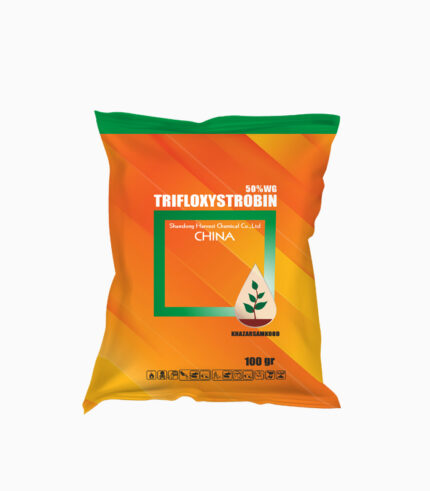| Pesticide class | Herbicide |
|---|---|
| Active ingredient | Active ingredient |
| Formulation | 40% SC |
| Resistance group | HRAC:B |
| PHI | PHI for this Herbicide has not been reported |
| Acute Oral LD 50 for Rats | 2635 mg/kg |
Bispyribac-Sodium 40% SC
It is a selective, systemic post-emergence herbicide. It belongs to the class of pyrimidinyloxybenzoic acid herbicides and inhibition of aceto-lactase synthase (ALS) or Acetohydroxyacid synthase (AHAS) mode of action. Its mode of action is by branched chain amino acid valine, leucine, and isoleucine synthesis inhibition. This herbicide is absorbed by the aerial parts and roots of the plant.
Cases and dosage
| Crop | Weed | Dosage | Application Time |
| Rice | Grass , Broadleaf weeds & Sedge | 65 ml lit per hectare | 2-4 leaves rice, in the early stages of growth |
Related products
Atrazin 80% WP
Trifluralin 48% EC
It is a selective, pre-emergence dinitroaniline herbicide which is mainly absorbed through the coleoptile and hypocotyl of weeds and prevents the germination of the weed seed through cell division blockage in the hypocotyl, as well as the development of the root system. It is not transferable in plants. Increasing the diameter of the root, causing swelling in the meristem area of the root tip, preventing the production of lateral roots are the symptoms of using this herbicide.
Glufosinate-Ammonium 20%SL
It is a non-selective, connected, and semi-systemic phosphonic acid herbicide inhibition of glutamine synthesis, leading to a complete breakdown of ammonia metabolism and subsequent accumulation of ammonia in tissues. This herbicide also interferes with photosynthesis. Glufosinate ammonium is used to control annual and non-perennial weeds, so this herbicide does not control perennial weeds well. Chlorosis, withering of tissues and finally, the death of the weed within 1 to 2 weeks are the symptoms of the effect of the herbicide.
Metribuzin 70%WP
Oxadiazon 12%EC
2,4-D + MCPA 67.5% SL
It is a selective-systemic and hormonal herbicide from the phenoxy-carboxylates group and a growth inhibitor. Auxin-like herbicides cause growth disturbance through binding to auxin binding proteins, which leads to twisting, thickening and elongation of leaves and stems. This herbicide is absorbed by the aerial parts of the plant.












Reviews
There are no reviews yet.